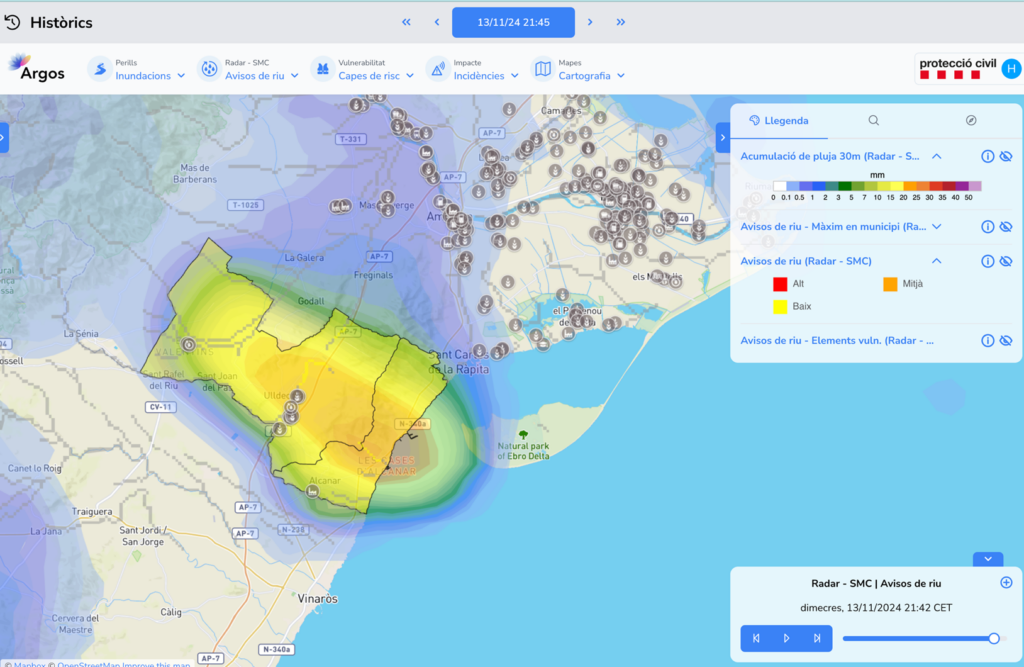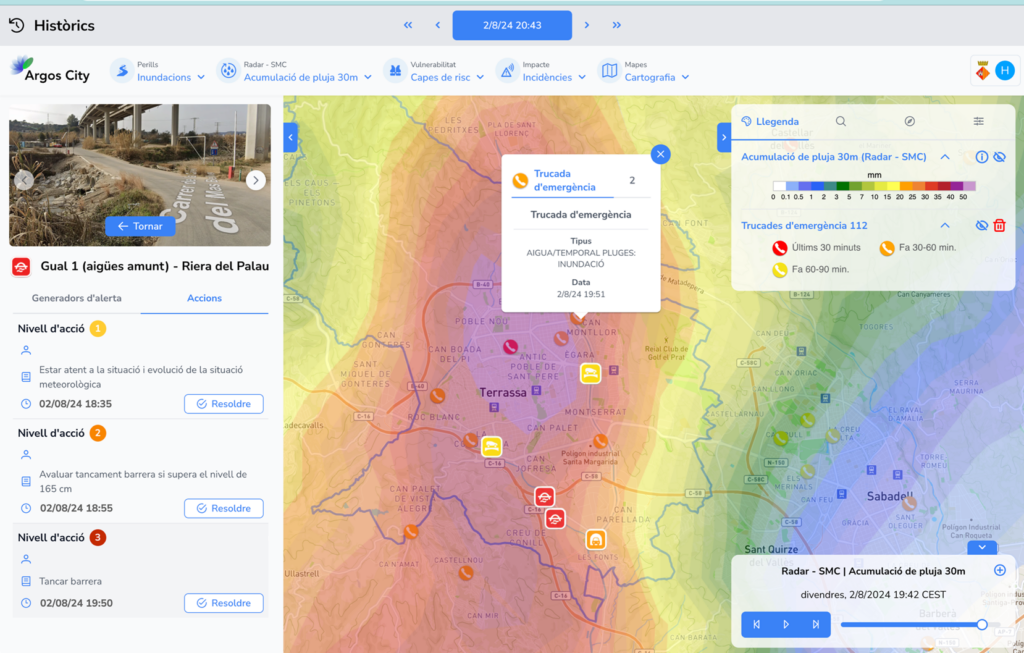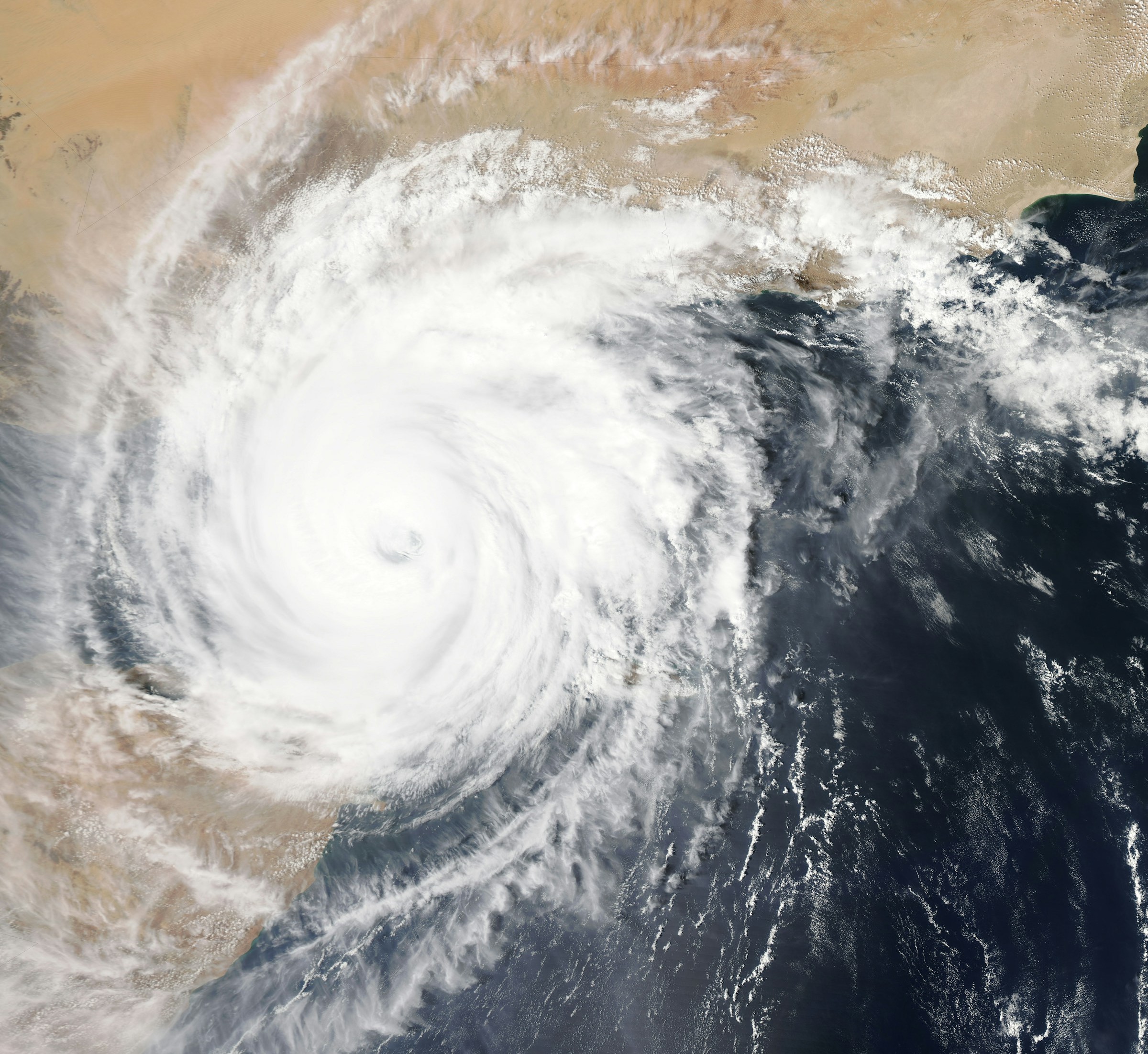In Catalonia, the adaptation measures planned within the framework of the RESIST project focus on civil protection , with the aim of improving and expanding Early Warning Systems (EWS) as well as raising awareness of weather-related risks. The measures address extreme events such as flash floods, forest fires, heat waves, and droughts, which are exacerbated by climate change.
RESIST local partners in Catalonia have improved the development of the Argos tool to facilitate regional and local coordination in emergency management. They have also improved and expanded early warning systems, testing them in the city of Terrassa and the town of Blanes.
What is Argos? And what is it used for?
Argos is an advanced system that combines an Early Warning System (EWS) and a Decision Support System (DSS). Its purpose is to optimise the management of emergencies caused by meteorological phenomena such as floods, blizzards, heat and cold waves, snowfall, coastal phenomena, and air pollution. Argos represents a paradigm shift in the way emergencies are addressed, moving from reactive to proactive management. In this way, it helps reduce the impact of these events on the population, basic services, critical infrastructure, and economic activities.
The Argos system integrates all the processes required to manage hazards arising from meteorological phenomena, harmonising data, products, alerts, impacts, and action protocols in an integrated solution. The system is designed to integrate a wide variety of information sources useful for operational emergency management, ranging from 112 emergency calls and real-time traffic reports to sensor data, radars, and meteorological models. In addition, these data sources allow for the definition of new alert and decision-making rules.
Implementation in Catalonia through the RESIST project
Argos was born as an evolution of the results of the H2020 ANYWHERE Project, where the Catalan Operational Coordination Centre (CECAT) of the Directorate General for Civil Protection of Catalonia contributed to its design. Since 2020, the system has been implemented at a regional level throughout Catalonia.
The RESIST project aims to extend the use of early warning and decision support systems at municipal level. Initially, it is being implemented in two locations: Terrassa and Blanes. In these localities, necessary adaptations are being made so that the system can accurately anticipate and manage emergencies at a local level. In the near future, the service will be expanded to more than 20 municipalities in Catalonia to assess the replicability and scalability of the system.
Work is also underway to improve coordination between systems at municipal and regional levels, which is crucial for effective emergency response.
The importance of Early Warning Systems in adaptation to climate change
Climate change is causing an increase in the frequency and intensity of extreme weather events, such as floods, heat waves, and other phenomena. While long-term mitigation measures are essential, it is also crucial to have early warning and decision support systems to manage these events more efficiently.
The implementation of systems such as Argos is essential to adapt to climate change. They help reduce the impact of extreme events on the population, essential services, critical infrastructures, and economic activities. The proactivity of these systems improves response capacity and resilience to meteorological disasters. The final objective of Argos is to provide emergency managers with timely, actionable information.
By transitioning from reactive to proactive emergency management, the system aims to enhance public safety, reduce economic losses, and improve the resilience of critical infrastructure. – Xavi Llort, from HYDS.
Argos case studies in action
On 13 November 2024, southern Catalonia suffered an episode of heavy rains that mainly affected the municipalities of Alcanar and Ulldecona. In this context, the Argos system provided alerts based on nowcasting radar (short-term forecast) and a hydrological territorial integration that made it possible to predict the impact of the storm. Thanks to this information and expert analysis, CECAT decided to issue an ES-Alert addressed to mobile phones in the affected areas. This alert helped mitigate the impacts of the flood, giving residents time to take precautions and minimise damage.

On 2 August 2024, the city of Terrassa experienced an episode of intense storms. In this case, the Argos system issued early warnings for several of the city’s critical elements, in particular for the fords that cross the Palau stream. In addition, the alerts included data from calls to the emergency number 112, allowing a better understanding of the impact of the rains on the municipality. The integration of this data was very useful for the management of the event.

These are just two examples of the effectiveness of the Argos tool to empower local services in emergency management. With the growing threat of climate change, the implementation of early warning systems such as Argos is more crucial than ever to reduce the negative impacts of these events on society and the economy. The solution, which has been tested – and will continue to be tested – in Catalonia, will be transferred as part of the RESIST twinning and transfer plans to Puglia (Italy) and Baixo Alentejo (Portugal).












